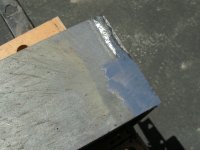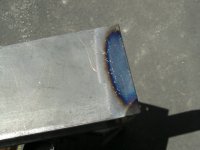kcender
Platinum Member
As I said,each situation is different.There is nothing wrong with Gas Metal Arc Welding.It certainly has it's place in welding.When I said I would use stick if my life depended on it,I was thinking more along the lines of heavier material such as a lug that would be supporting my weight.I should have been clearer.As for welding dirty material that is a definately not something I would recommend. Yes,I clean ALL material before I weld it.As for the debate over GMAW verses SMAW it can be debated forever.My opinion as a welder is that stick is more foolproof but slower. Done properly stick is a more ductile weld as shown by bend tests.Both finished welds have the same tensile strength provided they are done properly on clean material.Everybody is entitled to their own opinion,I have mine based on many years in the trade.



